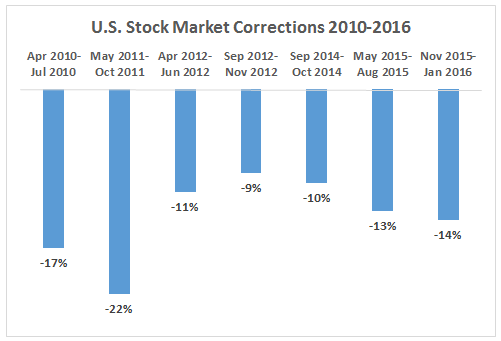I read a recent article in the Wall Street Journal entitled The Real Problem with Stock Buybacks (WSJ paywall) which spent a lot of time discussing multiple pitfalls of stock buybacks and touched on some lawmakers in Washington who would like to limit, or completely outlaw, the practice. To say I was dumbstruck by the piece would almost be an understatement.
Let me go through some of the article's points.
First, the idea that the SEC should have the ability to limit corporate buybacks, if in its judgment, carrying them out would hurt workers or is not in the long-term best interest of the company.
To be fair, the authors disagreed with this idea. They were simply bringing to readers' attention that it was out there. Public companies are owned by shareholders, and those shareholders are represented by the board of directors (whom they vote for). The CEO serves the board on behalf of those shareholders, though admittedly this is a problem when the CEO is also Chairman. As such, the government really has no place to tell boards how to allocate profits from the business that belong to the shareholders. This should be obvious, but evidently it is not to some. The entire activist investor concept is based on the idea that too few times investors pressure boards to act more strongly on their behalf. The system works, and should stay as-is.
The authors, however, do make an assertion of their own that I fail to understand. They claim that the real problem with stock buybacks is that they transfer wealth from shareholders to executives. More specifically, they state:
"Researchers have shown that executives opportunistically use repurchases to shrink the share count and thereby trigger earnings-per-share-based bonuses. Executives also use buybacks to create temporary additional demand for shares, nudging up the short-term stock price as executives unload equity. Finally, managers who know the stock is cheap use open-market repurchases to secretly buy back shares, boosting the value of their long-term equity. Although continuing public shareholders also profit from this indirect insider trading, selling public shareholders lose by a greater amount, reducing investor returns in aggregate."
This paragraph makes no sense, and of course, the authors (a couple of Harvard professors unlikely to have much real world financial market experience) offer up zero data or evidence to support their claims.
So let's address their claims one sentence at a time:
"Researchers have shown that executives opportunistically use repurchases to shrink the share count and thereby trigger earnings-per-share-based bonuses."
This statement implies that a shrinking share count and earnings per share growth are bad, or at least suboptimal. Why? The reason executive bonuses are based, in many cases, on earnings per share, is because company boards are working for the shareholders, and those shareholders want to see their stock prices rise over time. Since earnings per share are the single most important factor in establishing market prices for public stock, it is entirely rational to reward executives when they grow earnings.
"Executives also use buybacks to create temporary additional demand for shares, nudging up the short-term stock price as executives unload equity."
Insiders are notorious for owning very little of their own company's stock. Aside from founder/CEO situations, most CEOs own less than 1% of their company's stock. In fact, many boards are now requiring executives to own more company stock, in order to align their interests with the other shareholders even more. As such, the idea that executives unload stock at alarming rates, and that such actions form the bulk of their compensation, is not close to the truth in aggregate.
In addition, if the stock price is being supported, in part, by stock buybacks, does that not help all investors equally? Just as insiders can sell shares at these supposed elevated prices, can't every other shareholder do the same? At that case, how are the executives benefiting more than other shareholders?
"Finally, managers who know the stock is cheap use open-market repurchases to secretly buy back shares, boosting the value of their long-term equity."
This one makes no sense. Insiders buyback stock when it's cheap?! Oh no, what a calamity! In reality, company's have a poor record of buying back stock when it is cheap and often overpay for shares. Every investor in the world would be ecstatic if managers bought back stock only when it was cheap.
And how are buybacks a secret? Boards disclose buyback authorizations in advance and every quarter the company will announce how many shares they bought and at what price. It is true that such data is between 2 and 14 weeks delayed before it is published, but that hardly matters.
Again, the authors imply that increasing the value of stock is bad for investors, unless those investors are company insiders. In those cases they are getting away with something nefarious. In reality, each shareholder benefits from stock buybacks in proportion to their ownership level (i.e. equally).
"Although continuing public shareholders also profit from this indirect insider trading, selling public shareholders lose by a greater amount, reducing investor returns in aggregate."
Huh? Buying back cheap stock reduces investor returns and hurts public shareholders? I can only assume that the authors simply do not understand as well as they should what exactly buybacks accomplish and what good capital allocation looks like. It is a shame that the Wall Street Journal would publish an opinion so clearly misguided.








